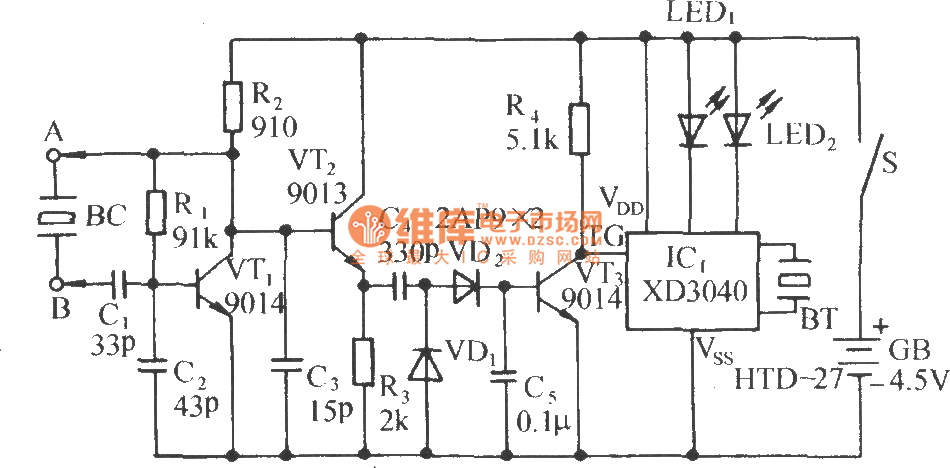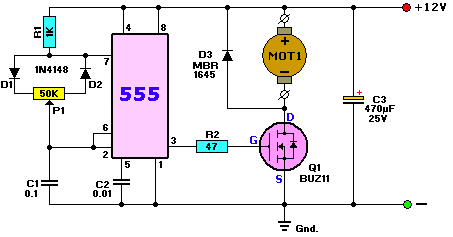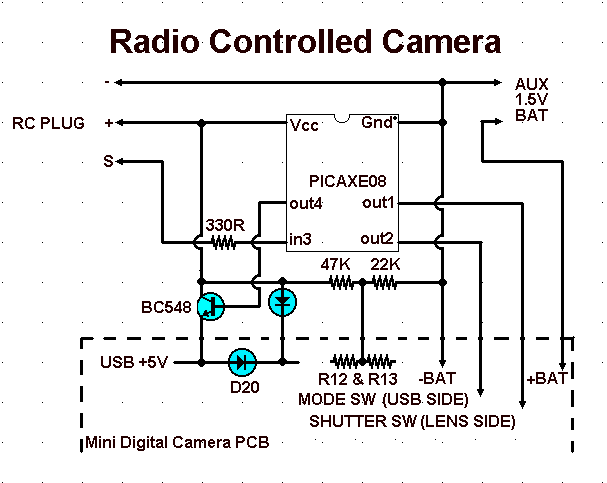
Design a esthetic and energy-conserving acousto-optic controlled lighting lamp of corridor

The optically-controlled circuit plays a crucial role in urban street lighting and corridor illumination. By utilizing this circuit, lighting lamps can be automatically turned on and off based on ambient light levels, thereby reducing the need for manual control, decreasing labor intensity, and achieving energy savings. However, the optically-controlled circuit has limitations; during the night, the lamp may remain on even when there is sufficient ambient light, leading to resource wastage and reduced lamp lifespan. To address this issue, a sound control circuit can be integrated with the optically-controlled circuit. This combination allows the lighting system to activate in response to sound, such as footsteps or other loud noises, while remaining off in the absence of sound. A time delay circuit is also necessary to ensure that the lamp remains illuminated for a brief period after sound detection before turning off. This design features an acousto-optic controlled lighting system that activates the LED lamp upon detecting an acoustic signal at night. If no sound is detected for a duration of five seconds, the lamp will turn off. If sound is detected within five seconds, the LED will remain lit. The system is designed to be inactive during the daytime to conserve energy. The compact and aesthetically pleasing design can be easily installed in various locations, such as corridors or construction sites. This system alleviates the need for users to search for switches in the dark and prevents unnecessary energy waste from lamps left on continuously. The circuit comprises a sound control circuit, an optically-controlled circuit, an amplifying circuit, and a monostable time delay circuit. Each component functions as follows: the optically-controlled circuit determines the brightness of the lamp based on light levels. An electret microphone captures acoustic signals, which are amplified and processed by two NE555 timers. The sound control time delay circuit, triggered by the NE555 timer, primarily operates when ambient light levels are low. The photoresistor's resistance varies inversely with light intensity, allowing it to effectively measure and respond to changes in illumination.
The integrated acousto-optic controlled lighting system is designed to enhance energy efficiency and user convenience in various applications, such as urban street lighting and industrial environments. The optically-controlled circuit utilizes a photoresistor that changes its resistance based on the intensity of ambient light. During daylight, the high light levels result in low resistance, keeping the circuit in a closed state and preventing it from responding to sound inputs. As dusk approaches and light levels decrease, the circuit activates, allowing it to respond to acoustic signals.
The electret microphone serves as the primary sensor for detecting sound. It captures ambient noise and converts it into an electrical signal. This signal is then amplified through an amplifying circuit, ensuring that even quiet sounds can trigger the lighting system. The amplified signal is fed into the NE555 timer, which is configured to operate in a monostable mode. This configuration allows the timer to produce a single output pulse when triggered by the sound signal, controlling the time delay for the lighting circuit.
The time delay circuit is crucial for preventing the lights from turning off immediately after the sound ceases. It ensures that the lamps remain illuminated for a predetermined duration (e.g., five seconds) after the last detected sound. If additional sound is detected within this time frame, the timer resets, and the lamp remains on. This feature is particularly useful in environments where individuals may be moving around, providing safety and visibility without unnecessary energy consumption.
The entire system is designed to be compact and easily mountable, making it suitable for various installations, including residential corridors, outdoor pathways, and industrial sites. The use of LED luminaires not only enhances energy efficiency but also ensures a long operational life, reducing maintenance costs associated with traditional lighting methods. Overall, this acousto-optic controlled lighting system represents an innovative solution to modern lighting challenges, balancing functionality, efficiency, and user convenience.The optically-controlled circuit has essential function in urban street lamps or corridors are lighted, adopt the optically-controlled circuit, can open and shut off the lighting lamp automatically according to power of the light, make sure nobody automaticallies control, can lighten workers` labor intensity, valid power saving. But optically-cont rolled circuit have defect their, night there is no light, the lighting lamp will be working, in this way, will cause the waste of resources, will shorten the life-span of the lighting lamp too. Add one the intersection of sound control and circuit on the basis of optically-controlled circuit at this moment, make lighting circuit when there is no lighting, only controlled by sound, when there are sound of one`s walking or other high sound, automatic working of the lighting circuit.
When the sound disappears, the lighting lamp goes out automatically, this needs to add a time delay circuit on condition that the optically-controlled circuit unite the job with the circuit of sound control, after making the lighting lamp light, went out automatically after certain time of delaying time. This text designed the acousto-optic controlled lighting lamp, when this circuit has acoustical signal at night, lighting lamp Use LED luminotron simulation Light; Delay 5 seconds when being silent, go out; If the sound interval is smaller than 5 seconds, then LED lights continuously.
The voiced-unvoiced is not lighted in the daytime. The small and exquisite esthetic and practical energy-conservation of this fund, can be installed to fix to can nail with the mosquito on the own gate on corridor, can also be used in the factory building, the construction site. Using this kind of lighting circuit, people needn`t try to find out the switch in the darkness, needn`t be afraid a little more either electricity wasting of altar lamps that is kept burning day and nighted and damages the bulb.
The night so long as when there are sound of one`s walking or other stronger sound, the light is lighted automatically, went out automatically after certain time of delaying time. Very applicable automatically controlled street lamp is lighted and corridor and corridor are lighted when the place is short.
This circuit is made up of circuit of sound control, optically-controlled circuit and amplifying circuit, monostable time delay circuit, analyze and confirm the circuit structure to its function one by one as follows. The optically-controlled circuit preferential according to power of the light determines the going out bright of the electric light.
The acoustical signal is received by the electret microphone BM, enlarges through inverse ratio, the amplifying signal is sent to 2 of NE555 timers, 6 feet. This circuit can control the time delay circuit of sound control, when light is high in the daytime, this circuit, under the function of the optically-controlled circuit, in closing state, does not respond to any acoustical signal, when the light is weaker in the evening, opened the function of this circuit with optically-controlled circuit, make this circuit make the corresponding response according to the external acoustical signal.
The failing out of NE555 timer controls 74HC123 sound control time delay circuit. This circuit acts when the light is weaker mainly. This is mainly controlled through the failing of optically-controlled circuit. Photo resistance up to external the intersection of illumination and power one resistance quantity Light and shade The original paper changed and changed, the stronger the light is, the smaller the resistance-value is, the weaker the light is, the greater the resistance-value is. The light dependent resistor also calls the photo resistance, it is to utilize the photoelectric effect of the semiconductor to make photic power and resistor changed with incidenting of a kind of resistance quantity, generally used in photic measureme
🔗 External reference
The integrated acousto-optic controlled lighting system is designed to enhance energy efficiency and user convenience in various applications, such as urban street lighting and industrial environments. The optically-controlled circuit utilizes a photoresistor that changes its resistance based on the intensity of ambient light. During daylight, the high light levels result in low resistance, keeping the circuit in a closed state and preventing it from responding to sound inputs. As dusk approaches and light levels decrease, the circuit activates, allowing it to respond to acoustic signals.
The electret microphone serves as the primary sensor for detecting sound. It captures ambient noise and converts it into an electrical signal. This signal is then amplified through an amplifying circuit, ensuring that even quiet sounds can trigger the lighting system. The amplified signal is fed into the NE555 timer, which is configured to operate in a monostable mode. This configuration allows the timer to produce a single output pulse when triggered by the sound signal, controlling the time delay for the lighting circuit.
The time delay circuit is crucial for preventing the lights from turning off immediately after the sound ceases. It ensures that the lamps remain illuminated for a predetermined duration (e.g., five seconds) after the last detected sound. If additional sound is detected within this time frame, the timer resets, and the lamp remains on. This feature is particularly useful in environments where individuals may be moving around, providing safety and visibility without unnecessary energy consumption.
The entire system is designed to be compact and easily mountable, making it suitable for various installations, including residential corridors, outdoor pathways, and industrial sites. The use of LED luminaires not only enhances energy efficiency but also ensures a long operational life, reducing maintenance costs associated with traditional lighting methods. Overall, this acousto-optic controlled lighting system represents an innovative solution to modern lighting challenges, balancing functionality, efficiency, and user convenience.The optically-controlled circuit has essential function in urban street lamps or corridors are lighted, adopt the optically-controlled circuit, can open and shut off the lighting lamp automatically according to power of the light, make sure nobody automaticallies control, can lighten workers` labor intensity, valid power saving. But optically-cont rolled circuit have defect their, night there is no light, the lighting lamp will be working, in this way, will cause the waste of resources, will shorten the life-span of the lighting lamp too. Add one the intersection of sound control and circuit on the basis of optically-controlled circuit at this moment, make lighting circuit when there is no lighting, only controlled by sound, when there are sound of one`s walking or other high sound, automatic working of the lighting circuit.
When the sound disappears, the lighting lamp goes out automatically, this needs to add a time delay circuit on condition that the optically-controlled circuit unite the job with the circuit of sound control, after making the lighting lamp light, went out automatically after certain time of delaying time. This text designed the acousto-optic controlled lighting lamp, when this circuit has acoustical signal at night, lighting lamp Use LED luminotron simulation Light; Delay 5 seconds when being silent, go out; If the sound interval is smaller than 5 seconds, then LED lights continuously.
The voiced-unvoiced is not lighted in the daytime. The small and exquisite esthetic and practical energy-conservation of this fund, can be installed to fix to can nail with the mosquito on the own gate on corridor, can also be used in the factory building, the construction site. Using this kind of lighting circuit, people needn`t try to find out the switch in the darkness, needn`t be afraid a little more either electricity wasting of altar lamps that is kept burning day and nighted and damages the bulb.
The night so long as when there are sound of one`s walking or other stronger sound, the light is lighted automatically, went out automatically after certain time of delaying time. Very applicable automatically controlled street lamp is lighted and corridor and corridor are lighted when the place is short.
This circuit is made up of circuit of sound control, optically-controlled circuit and amplifying circuit, monostable time delay circuit, analyze and confirm the circuit structure to its function one by one as follows. The optically-controlled circuit preferential according to power of the light determines the going out bright of the electric light.
The acoustical signal is received by the electret microphone BM, enlarges through inverse ratio, the amplifying signal is sent to 2 of NE555 timers, 6 feet. This circuit can control the time delay circuit of sound control, when light is high in the daytime, this circuit, under the function of the optically-controlled circuit, in closing state, does not respond to any acoustical signal, when the light is weaker in the evening, opened the function of this circuit with optically-controlled circuit, make this circuit make the corresponding response according to the external acoustical signal.
The failing out of NE555 timer controls 74HC123 sound control time delay circuit. This circuit acts when the light is weaker mainly. This is mainly controlled through the failing of optically-controlled circuit. Photo resistance up to external the intersection of illumination and power one resistance quantity Light and shade The original paper changed and changed, the stronger the light is, the smaller the resistance-value is, the weaker the light is, the greater the resistance-value is. The light dependent resistor also calls the photo resistance, it is to utilize the photoelectric effect of the semiconductor to make photic power and resistor changed with incidenting of a kind of resistance quantity, generally used in photic measureme
🔗 External reference





